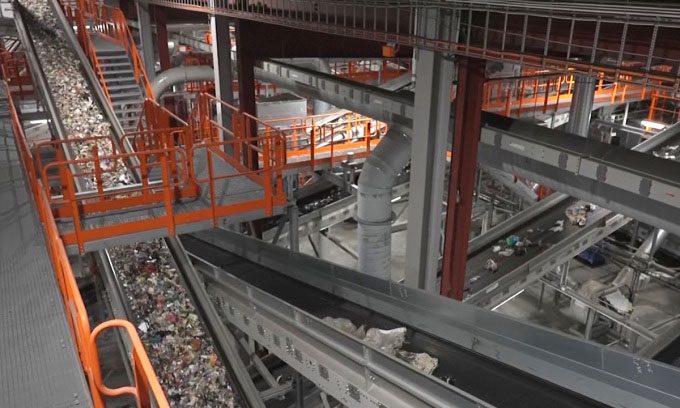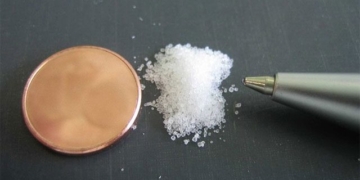The Site Zero facility, spanning 60,000 m2, can sort up to 200,000 tons of plastic waste each year thanks to its infrared camera system.
Sweden has inaugurated the Site Zero plant in the city center of Motala, which is expected to double the amount of plastic packaging recycled in the country, CGTN reported on November 19. With advanced technology, the facility has the capability to sort up to 200,000 tons of plastic packaging annually, according to the non-profit organization Sweden Plastic Recycling. This figure surpasses any other plastic sorting facility in the world.

Site Zero plastic waste sorting facility in Sweden. (Photo: AP).
Previously, an older plant at the same location could only sort five types of plastic, resulting in approximately 47% of materials being recycled, while the rest had to be incinerated, according to Mattias Philipsson, CEO of Sweden Plastic Recycling. In contrast, the new facility can help recycle 95% of plastic packaging, minimizing the amount that is burned. Incinerating plastic affects the climate by releasing additional greenhouse gases into the atmosphere.
The world produces more than 430 million tons of plastic each year, with two-thirds being short-lived products that quickly become waste, spilling into oceans and infiltrating the human food chain, as reported in an April report by the United Nations Environment Programme. Global plastic waste is projected to triple by 2060, with about half going to landfills and less than one-fifth being recycled.
At Site Zero, the 60,000 m2 facility uses conveyor belts to transport 40 tons of mixed plastic waste each hour. Subsequently, items such as chocolate wrappers, nylon bags, yogurt containers, and white polystyrene are gradually broken down, sorted by size, and classified through a fully automated process based on the infrared camera system. Asa Stenmarck, an expert at the Swedish Environmental Protection Agency, believes there will eventually be a market for all 12 types of plastic sorted by the facility.
After sorting, the plastic can be recycled using traditional mechanical methods or through chemical processes, which often use heat or chemical solvents to break down the plastic into liquids and gases to create oil-like mixtures or basic chemicals.
Philipsson stated that while improved sorting facilities will help increase the amount of plastic recycled in Sweden, the level of effectiveness also depends on households properly sorting their waste. “Most plastic is still incinerated because it is not sorted by households,” he said.




















































